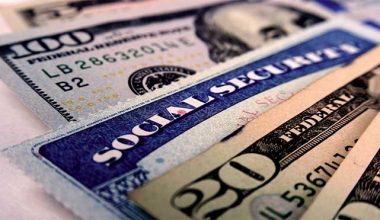Reinvesting dividends is a tempting tactic that might boost your investment returns. So, when you reinvest a dividend, you usually buy more shares of the company or fund that gave you the dividend when the dividend is paid. Dividend reinvestment can help you make more money by letting you buy more stock and lowering your risk by spreading out the cost over time. Read on to learn more about dividend reinvestment plan, its taxes and calculator.
Dividend Reinvestment Plan
If you get dividends in the form of shares instead of cash, you can easily, quickly, and cheaply add to your holdings. Participating companies may offer more than one way to reinvest dividends, but most of the time they only offer one. Additionally, they might change or discontinue offering some options. Elections made in that circumstance that weren’t used for that payout will be retained and used for future dividends.
How Does Dividend Reinvestment Plan Work?
When you reinvest a dividend, you usually buy more shares of the company or fund that gave you the dividend when the dividend is paid. Dividend reinvestment plan can help you make more money by letting you buy more stock and lower your risk by spreading out the cost over time.
Dividend Reinvestment With a Broker
Although dividend reinvestment is still a tried-and-true method, investors can now do it swiftly and affordably without needing to enroll in a company’s DRIP program. Due to the large number of free brokerages and the seemingly endless number of free transactions offered by many major online brokerages, reinvesting your own income is easy. If you would like to do so, you can configure your brokerage account to automatically reinvest dividends in shares of the company or fund that delivered the dividend. If your broker allows fractional shares, you can use all your money.
The Benefits and Drawbacks of Dividend Reinvestment
Dividend reinvestment has many of the advantages and disadvantages of conventional investing, as well as some extra advantages and disadvantages.
Benefits of dividend investing
- Increase your revenue by compounding. Compounding will help you if the stock price increases over time as you increase your investment.
- Put it out of your mind. If your account is set up to reinvest profits automatically, you’re done. Most of the time, the plans continue until you tell them to stop.
- easy to set up Both setting up DRIP plans and reinvesting at your brokerage are easy procedures.
- No commissions are due on trades. Even though there aren’t many internet brokers offering trading fees at the moment, you might be able to save money if you allow automatic dividend reinvestment at a mutual fund.
- Dollar-cost averaging can be used to reduce risk. You can take advantage of dollar-cost averaging and lower your risk by reinvesting gradually.
Disadvantages of Dividend Reinvestment
- May need minimums. Although certain companies could have a minimum share requirement, DRIPs are meant to help small investors.
- Plans might be modified. DRIPs can vary widely, so it’s important to discuss the specifics of the employer’s plan with them. For instance, certain companies may charge a one-time account opening cost. You can learn more about the plan from the company’s investor relations division after which you can decide if it meets your demands.
- DRIPs are exclusively used to invest in the shares of the company. DRIPs only invest in their stocks or funds. Therefore, if you want to use your dividend yield payout to buy a new stock, you will need to be proactive.
- Strict timeframe for investments. DRIPs and reinvestments conducted through a broker usually occur at the same time as dividend payments, thus investors have no control over when reinvestment takes place. There may be more room for profit here than there was with the corporation that paid the dividend.
Do You Have to Pay Taxes if You Reinvest Dividends?
Regardless of whether you get your dividend payment in cash or shares, you are still liable for dividend reinvestment taxes. That might not be a major problem if your annual dividend income is simply a few hundred dollars. It can become problematic if you make thousands of dollars and want to invest all of them in stocks. To keep your dividend reinvestment going, you’ll have to take money out of other accounts to pay the tax.
Some financial advisors may tell you to hold dividend stocks in an IRA or another tax-advantaged account. It’s one way to stop taxes from going up.
Dividend Reinvestment Taxes
Many investors opt to use a “dividend reinvestment plan” (DRIP) or automated dividend reinvestment (ADR) to reinvest their profits back into the company. They can now purchase more company shares without having to pay any further transaction costs. The majority of businesses provide DRIP or ADR in some capacity, albeit with certain limitations (such as only being available to UK residents). If you’re interested in doing this with your dividend reinvestment taxes, check with the relevant company.
Furthermore, if you receive your dividend payment in cash and subsequently reinvest it yourself, the dividends are treated as though you had received the cash. As a result, they must pay taxes at the rate that corresponds to their ordinary marginal income tax bracket. However, if the corporation reinvests your dividends to buy more shares, like through a DRIP campaign, you won’t have to pay dividend reinvestment taxes until you sell those shares. The difference between the price you paid for the shares and the amount you received when you sold them will therefore be subject to capital gains dividend reinvestment taxes.
Are Dividend Reinvestment Taxes Taxed At Corporate Or Individual Level?
Dividends are subject to both corporation tax for firms and income tax for individuals in the UK. Dividends given to shareholders are counted as part of a company’s taxable profits, which are taxed. A person’s whole income, including any profits from stock investments, is subject to income tax. The tax rate is based on the taxpayer’s unique situation and the income tax bracket mentioned above.
Dividends paid to corporations are exempt from corporation tax. In this system, corporate profits are taxed before being distributed to shareholders, and dividend income is taxed at the shareholder’s marginal rate.
What Are The Benefits And Risks Of Dividend Reinvestment?
Businesses provide their stockholders with money in the form of dividends. They are often delivered regularly and regularly returned to the business. Reinvesting dividends can help you expand your investment, but there are risks and advantages to keep in mind.
Benefits
- Dividends can be compounded to increase your earnings. Accordingly, your initial investment should increase together with the dividends you receive, boosting your overall return. This could greatly raise the return on your investment over time.
- Dividends are taxable income, that is to say, reinvesting them in the business will delay paying taxes on them until you sell your shares. This might be useful if you intend to keep your investment for a while, but if you need money right away, you might want to think about taking the taxable income and investing it somewhere else.
- By purchasing stock shares at a discount, reinvesting may allow you to boost your earnings.
Risks
- Reinvesting dividends is essential to keep in mind because there is always a chance that the company’s stock price and dividend payments could decline, which would result in a loss.
- You might not make as much money if the stock price declines as you would have if you had simply cashed the dividend. Dividend reinvestment keeps your money safe and keeps it from being used for other kinds of investments.
- When shares are automatically reinvested, you can be obliged to pay more than you would have been comfortable for them.
Lastly, think about the pros and cons of reinvested earnings before making a choice, just like you would with any other investment-related choice.
Dividend Reinvestment Plan
A DRIP plan gives people the option, usually at a discount, to put dividends back into the company’s stock. It’s important to remember that these investments are still subject to taxes, despite the fact that this enables long-term investors to support their investments with more money at a reduced cost (more on that later).
Types of Dividend Reinvestment Plans
The following are the three most common forms of dividend reinvestment plans:
#1. Company-operated DRIP
This is when a business has a specific department in charge of overseeing its own DRIP.
#2. Third-party-operated DRIP
A third party is hired by the company to handle the whole DRIP on its behalf. When managing a company’s DRIP would be too expensive and time-consuming, this is frequently done.
#3. Broker-operated DRIP
On some investments, brokers might offer DRIPs to investors; however, some companies might not. DRIP brokers purchase shares on the open market. Depending on how well they know their clients, brokers often charge little or no commission for DRIP stock trades.
How do DRIPs Work?
With a DRIP, dividends are re-invested at a set rate the day after they are usually paid out. The day the dividend is paid, according to Philip Weiss, the founder and, chief financial officer of Apprise Wealth Management, you should buy more fractional shares of the company. This situation is defined as “any automatic arrangement that allows the reinvestment of dividends received in an account housed with a brokerage or financial institution.”
Regardless of how the stock market is doing, this type of investment plan, also known as dollar-cost averaging, advocates for making regular, equal-amount investments. DRIPs automate investing and spread risk by continuing to invest regardless of market performance. This is particularly helpful for investors who find it difficult to stay away from their portfolios during choppy market circumstances.
Advantages of DRIPs
Owning DRIPs has three key advantages, including:
- An investor’s investment can increase dramatically over time using a DRIP.
- All stakeholders gain from the company’s utilization of the reinvestment funds for expansion and development.
- Instead of receiving a huge sum at the end of the year, a dividend reinvestment plan can offer investors a consistent income stream every time they reinvest dividends.
- Many businesses give consumers who don’t have a sizable investment amount savings on share purchase fees when employing a DRIP.
Negative Effects of DRIP
Even though it might sound good to have your income automatically re-invested, many dividend reinvestment plans have big problems. DRIPs have drawbacks, just like any other investment strategy, and these should be taken into account before investing. They consist of:
- Your company’s voting rights may be restricted by a DRIP.
- Additionally, rather than doing so at your own will, you will be obliged to acquire, sell, and liquidate your assets in line with the company’s schedule.
- In an emergency, you might not be able to sell right quickly.
Institutional investors, like banks, financial organizations, and insurance firms, are the only ones who can take part in dividend reinvestment programs in India. Investors can get similar benefits by buying into certain plans offered by stock exchanges or by using the portfolio management services that mutual fund companies offer.
What is Dividend Reinvestment Calculator?
Through the dividend reinvestment calculator, you can grow the number of shares you currently own without making any further acquisitions. Shares are issued each time a stock pays a dividend; to determine how many shares are issued, divide the dividend’s dollar amount by the stock’s current price.
Reinvested dividends add up over time and help to increase the value of your holdings. You can use the Dividend Reinvestment Calculator to figure out how much an investment will be worth in the future with and without reinvesting dividends. A $150 stock with a $3 annual dividend, a 4% annual stock price growth rate, and a 1% annual dividend growth rate would be a good place to start. In the event of dividend reinvestment, what would the shares be worth?
What Is the Downside to Reinvesting Dividends?
The fact that dividend reinvestment frequently occurs automatically or without much consideration is one of its drawbacks. Without your involvement, a dividend reinvestment plan will purchase more shares. Whether the stock price is high or low, this will still occur.
Which Is Better Dividend Reinvestment or Growth?
For both IDCW Reinvestment Plan and the Growth Plan reinvest the mutual fund scheme’s returns in order to increase returns and give you access to compounding. The Growth Plan is more tax-efficient than the Dividend Reinvestment or IDCW Reinvestment plans, which is the only distinction.
When Should I Stop Reinvesting Dividends?
Sometimes it makes more sense to cash out dividends rather than reinvesting them. These situations include needing the money when you are retired or almost retired, when the stock or fund isn’t performing well, when you wish to diversify your portfolio, and when reinvesting throws your portfolio out of balance.
Do Dividends Automatically Get Reinvested?
DRIPs, which automatically reinvest dividends by purchasing more shares for investors, are frequently used by companies. When you use a DRIP, you can get cheaper share prices, acquire fractional shares—which brokers typically don’t permit—and avoid paying commissions or brokerage costs for the shares you purchase.
References
- buyupside.com
- fortune.com
- realbusiness.co.uk
- bankrate.com
Related Articles
- DRIP CAMPAIGN: A Guide to Drip Campaign Marketing
- Yield Curve Theories: Understanding the Yield Curve Theories
- Dividend Yield: Meaning, Detailed Examples, Formula & Free Investor Tips
- WHAT IS GROWTH INVESTING: A Beginner’s Guide To Growth Investing
- SMALL BUSINESS EMAIL MARKETING: Meaning, Best Email Marketing Software, and Tips






